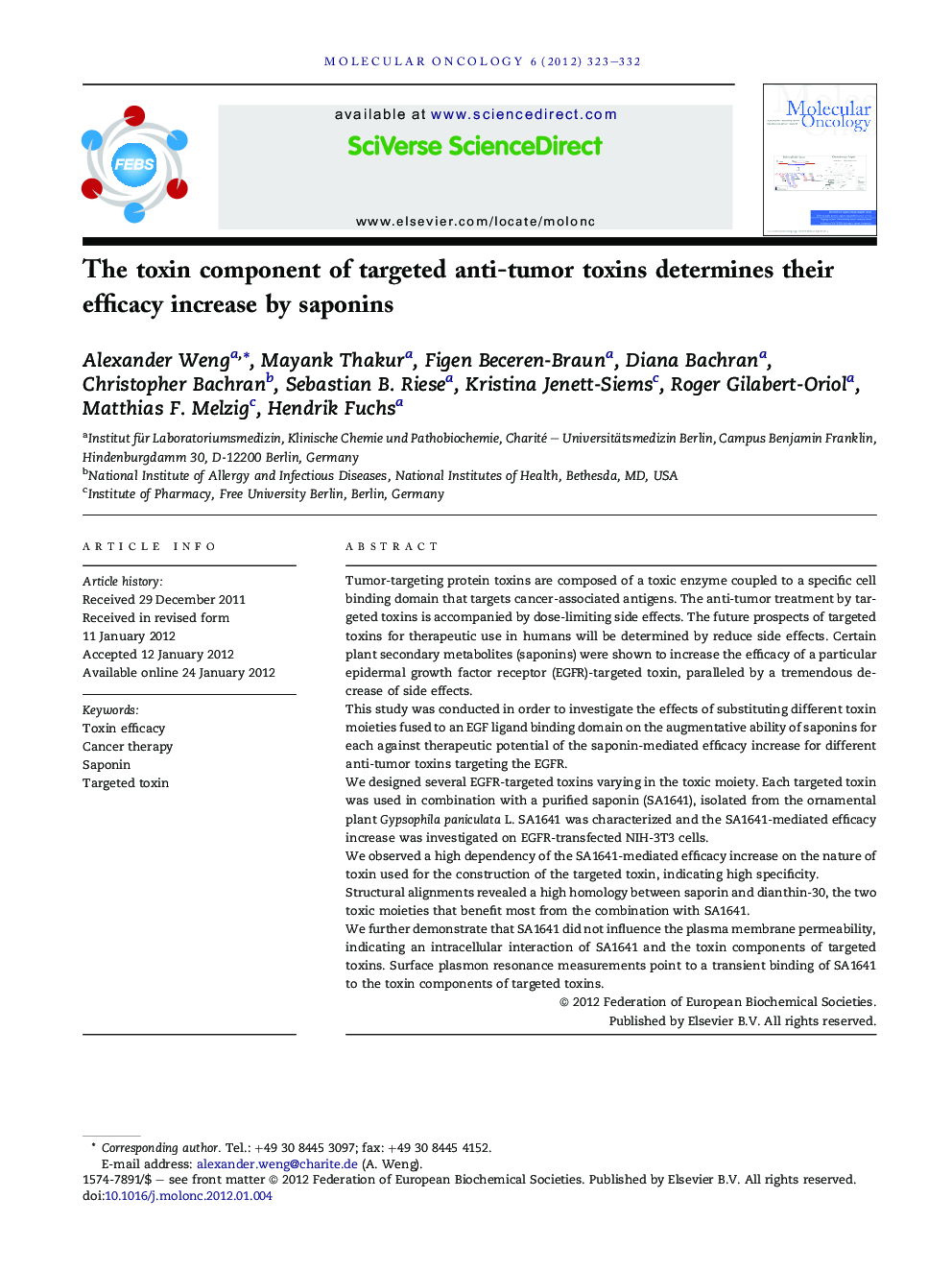| Article ID | Journal | Published Year | Pages | File Type |
|---|---|---|---|---|
| 2145796 | Molecular Oncology | 2012 | 10 Pages |
Tumor-targeting protein toxins are composed of a toxic enzyme coupled to a specific cell binding domain that targets cancer-associated antigens. The anti-tumor treatment by targeted toxins is accompanied by dose-limiting side effects. The future prospects of targeted toxins for therapeutic use in humans will be determined by reduce side effects. Certain plant secondary metabolites (saponins) were shown to increase the efficacy of a particular epidermal growth factor receptor (EGFR)-targeted toxin, paralleled by a tremendous decrease of side effects.This study was conducted in order to investigate the effects of substituting different toxin moieties fused to an EGF ligand binding domain on the augmentative ability of saponins for each against therapeutic potential of the saponin-mediated efficacy increase for different anti-tumor toxins targeting the EGFR.We designed several EGFR-targeted toxins varying in the toxic moiety. Each targeted toxin was used in combination with a purified saponin (SA1641), isolated from the ornamental plant Gypsophila paniculata L. SA1641 was characterized and the SA1641-mediated efficacy increase was investigated on EGFR-transfected NIH-3T3 cells.We observed a high dependency of the SA1641-mediated efficacy increase on the nature of toxin used for the construction of the targeted toxin, indicating high specificity.Structural alignments revealed a high homology between saporin and dianthin-30, the two toxic moieties that benefit most from the combination with SA1641.We further demonstrate that SA1641 did not influence the plasma membrane permeability, indicating an intracellular interaction of SA1641 and the toxin components of targeted toxins. Surface plasmon resonance measurements point to a transient binding of SA1641 to the toxin components of targeted toxins.
Graphical abstractFigure optionsDownload full-size imageDownload high-quality image (215 K)Download as PowerPoint slideHighlights► Combination therapy. ► Targeted toxins. ► Efficacy increase by saponins. ► Binding of saponins to toxins.
